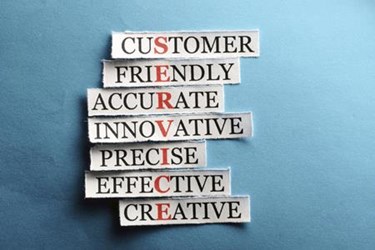Driving Revenue Through Your Customer Service Team
By Ivan Moore, Jolt Consulting Group

Service and sales are more interconnected than ever before, especially in an era where the customer has a wealth of information and competition is abundant. To add another strategic weapon in a company’s playbook, the entities of service and sales must merge into one point of contact: the customer service representative (CSR). The CSR, existing as a voice in a call center, or the other end of an online chat, provides multiple touch points with a loyal customer each year and also has the power to up-sell and cross-sell products and services without adding organizational costs.
To continuously evolve as a business, leaders must see their customer service division as more than just an entity to solve customer inquiries, settle disputes, or troubleshoot. Today’s CSR must become a hybrid of sales and service – no longer passively “selling” while providing a first-call resolution and a first-rate customer experience. Instead, they must actively contribute as a revenue-generating employee.
Businesses have begun to realize that the “hidden” customer service channel is ripe for leveraging a sales-through-service model. Some businesses execute it well — such as credit card companies, which can generate up to 25 percent of total net revenues this way, and telecom operators, who produce 60 percent of revenue, according to a McKinsey report. CSRs within manufacturing and distribution companies have the opportunity to drive significant revenue as parts quotes are a common customer inquiry; parts traditionally generate 2 to 3 times gross profit margin versus other revenue lines. Other companies are less “mature” and are still attempting to solve the CSR selling model.
Ingraining a “Service Through Sales” Model Within an Organization
No longer does the customer service division need to be considered a cost center. By investing in the department and structuring it more like a sales organization, complete with revenue goals and a sales-oriented leader, CSRs can transition from service-focused to service-through-sales adept.
As with any change in an organization, the leadership team must be firmly on board, backing the initiative from both managerial and investment standpoints. Change management and a culture shift within an established department is no easy feat, but with a strong sales-focused manager at the helm, he or she can guide the service-focused employee by aligning personnel to work towards a common goal: converting their department into a revenue-generating entity. However, this must not come at the expense of providing a superior customer experience. Companies must walk a fine line.
It will be necessary for the manager to communicate expectations, provide metrics, and outline goals for the division. Training, both initial and ongoing, must be aggressively provided, easing the current workforce into a routine of giving service to customers while also integrating a sales conversation into the mix. Incentives also go a long way, i.e., motivating and rewarding employees to embrace the sales-through-service model with monetary compensation. Additionally, the manager should consider making changes to the hiring strategy moving forward, recruiting personnel with both sales and service competencies.
Implementing a strategic yet divergent direction is likely to create a challenge for any organization. However, by empowering agents to transition from problem solvers to capable salespeople will turn inbound calls into revenue generating opportunities.
Tips and Traps
Acting as both a service and sales representative requires a delicate balance when communicating with a customer. Since customer service personnel typically field inbound customer inquires via various channels (call, email, chat, portal), it’s imperative that CSRs address a customers’ initial service request before cross-selling or up-selling. Listening to a customer and resolving their inquiry is, first and foremost, a paramount factor in building a trusted relationship and a successful outcome.
Once a customer’s request is resolved, agents must quickly re-engage the customer long enough to clearly and quickly deliver the sales offer. More than 80 percent of customers who were happy with a rep’s performance are said to be willing to listen to the agent’s offer. The order is service first and sales second to produce the outcome: revenue.
---
Citation
Customer Contact Week Digital, February 2011, https://www.customercontactweekdigital.com
WNS, https://www.wns.com/co-create-to-outperform
